
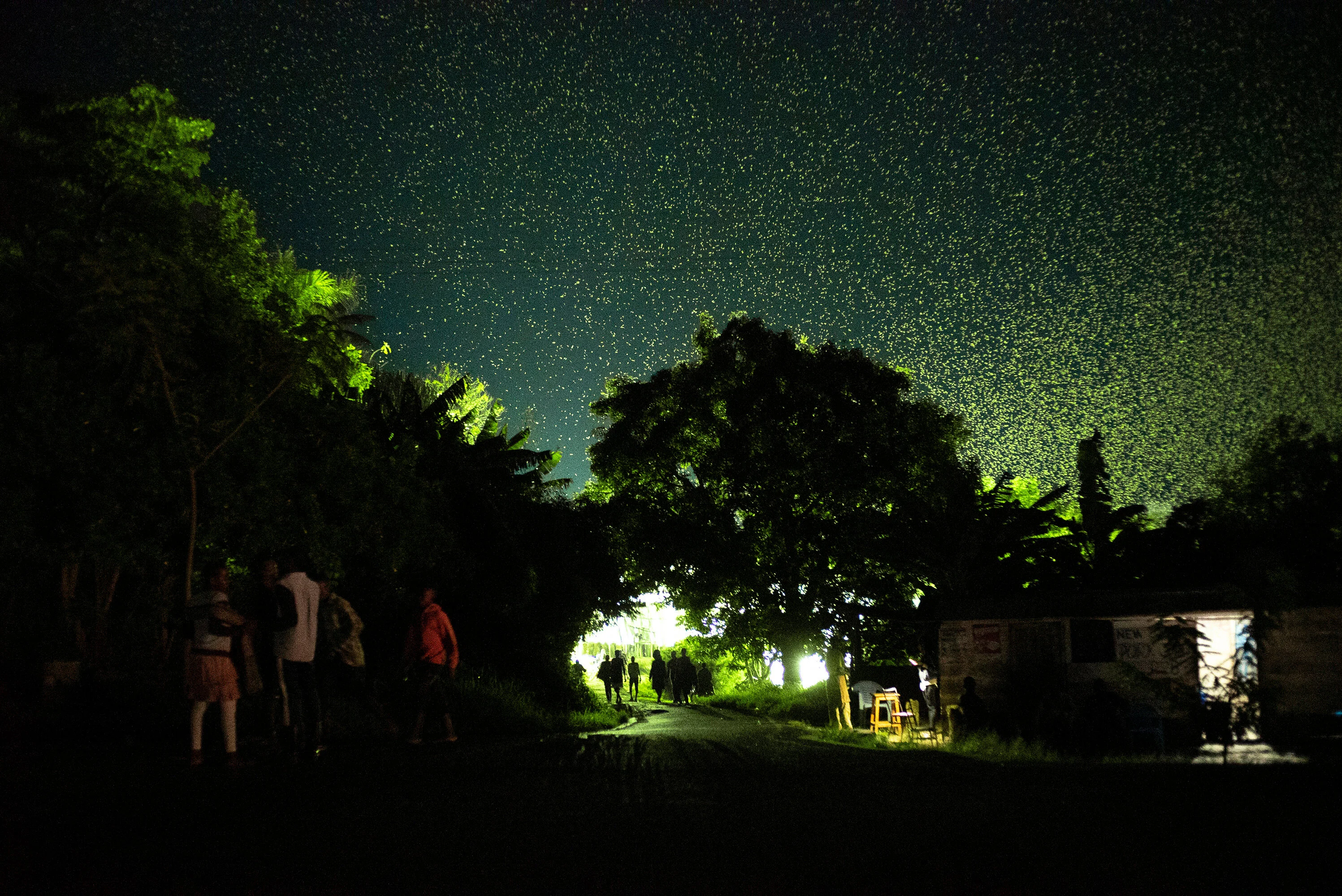
Twice a year, thousands of Ugandans take to the streets and the forests in the dead of night to pursue swarms of bush crickets. Photographer Michele Sibiloni lived and worked there for 10 years, capturing this beautiful and dangerous tradition for his book Nsenene. Here, he talks to writer Bruno Bayley about the perils of the trade, and about the incredible opportunities and rewards possible for those who take part.
Though they’re generally referred to as grasshoppers, Michele Sibiloni’s new book, Nsenene, is in fact about the nocturnal harvesting of bush crickets (Ruspolia differens if we want to get specific). The creatures are called nsenene in the Luganda language spoken in Africa’s Great Lakes region, including Uganda, where the photographer lived and worked for 10 years until the late summer of 2021. Of course, the book isn’t just about harvesting bush crickets. It’s also about the meeting of mythology and economics, the fraught confluences of tradition and technology, climate change, opportunity, and magic.
The trapping of nsenene has long been a traditional source of both food and income in parts of Uganda where the crickets swarm twice a year after the rainy seasons. They’re collected ad hoc by children and individuals who pluck them from leaves or sweep them from the ground to cook or to sell. They’re also harvested en masse by organized groups making use of ever-evolving traps. These traps are focused around lights, to which the nsenene are attracted, and employ smoke and hoardings that the insects fly into before falling, confused, to earth where they can be scooped into sacks and sold.
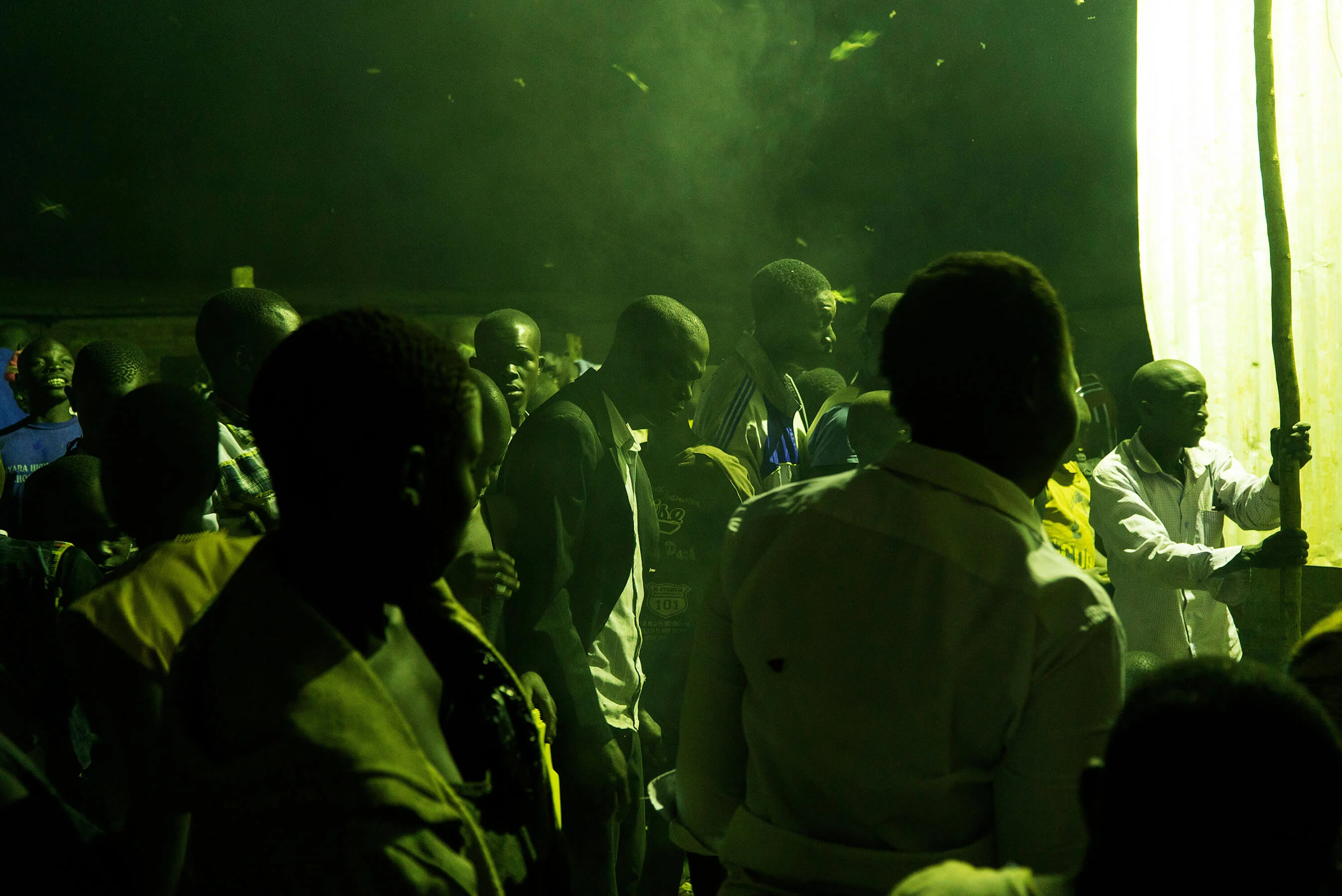
It is really important to have Ugandan voices telling their stories.
In one of three texts included in Michele’s book, Katende Kamadi, chairman of an association which represents the trappers, reels off developments in harvesting techniques that read like a cricket-trapping arms race: from the bucolic 1970s, when a lantern and a bed sheet would do the job, to the complex constructions of logs, iron sheets and oil drums used today. Lanterns have been substituted for high-powered fluorescent bulbs, the glass broken away leaving the filaments exposed.
Since 2014 Michele has followed the trappers from the streets of Kampala to the forests along the Uganda-DRC border as they pursue these elusive, fleeting swarms. “There are a lot of myths, legends and factors that people take into account,” Michele explains. “There needs to be rain during the day followed by sunshine, but there should be no wind. A full moon, they say, distracts the grasshoppers from the traps. Some of this is true, some less so…The only thing that we all know is that [the swarms are] unpredictable.”
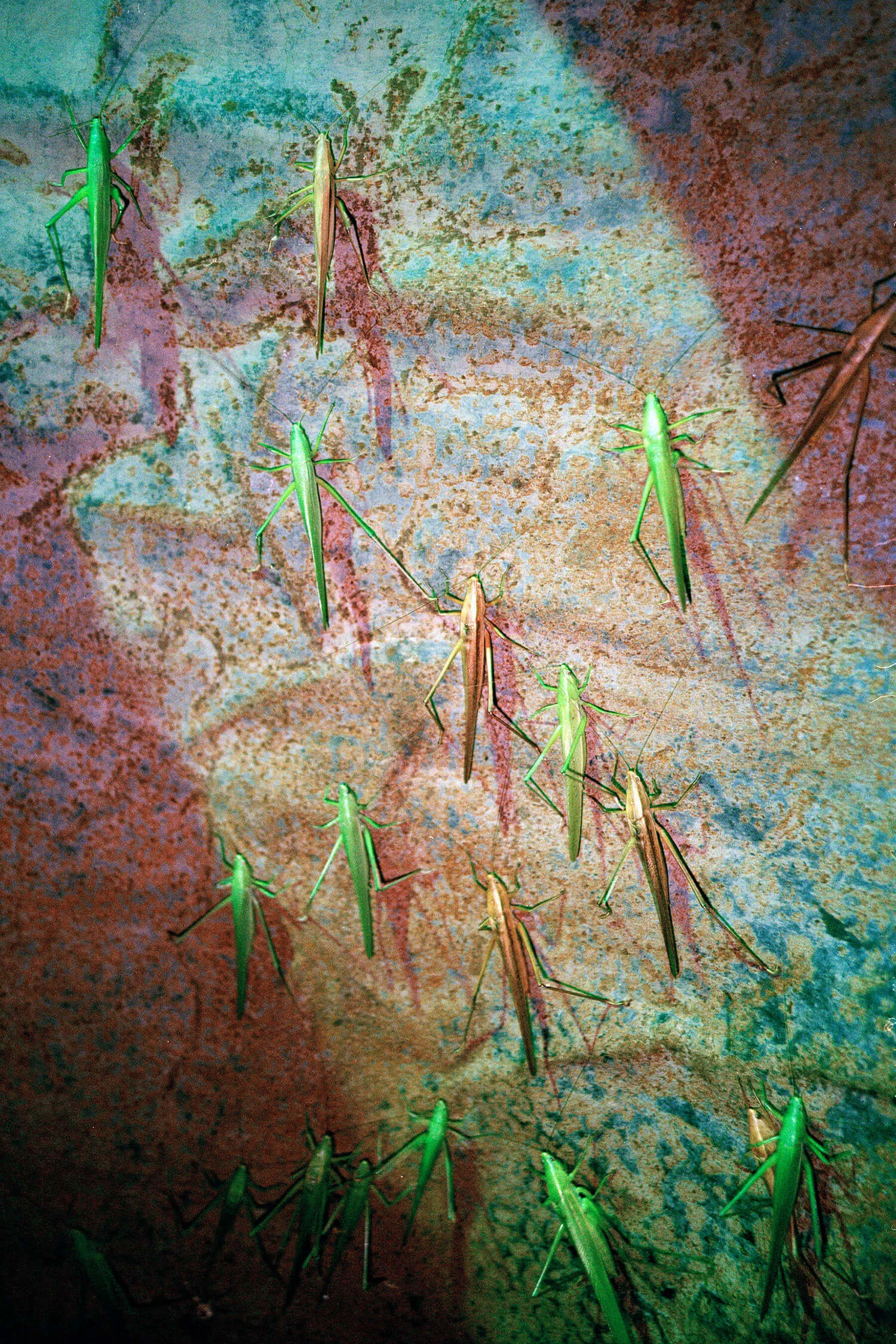
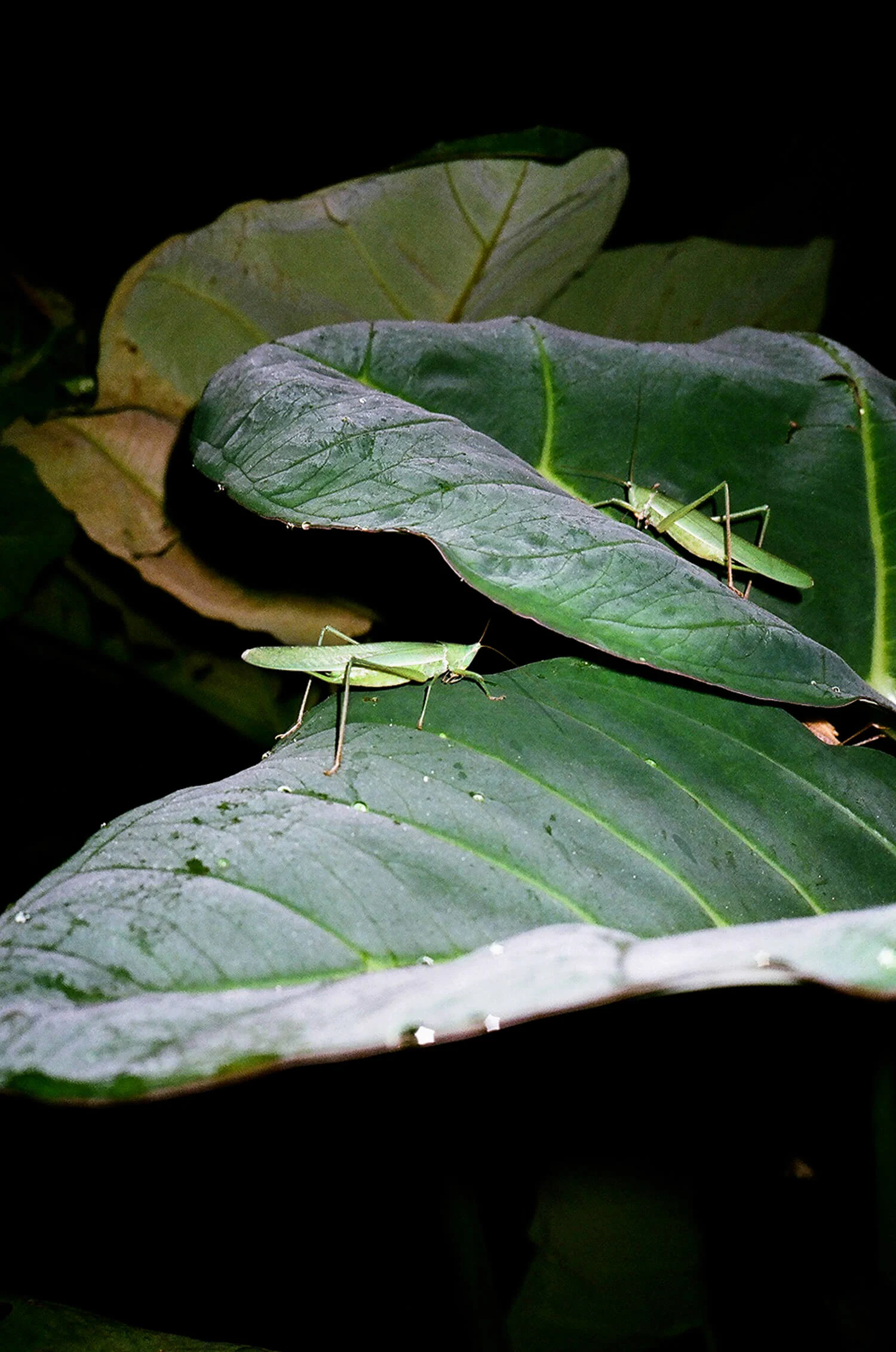
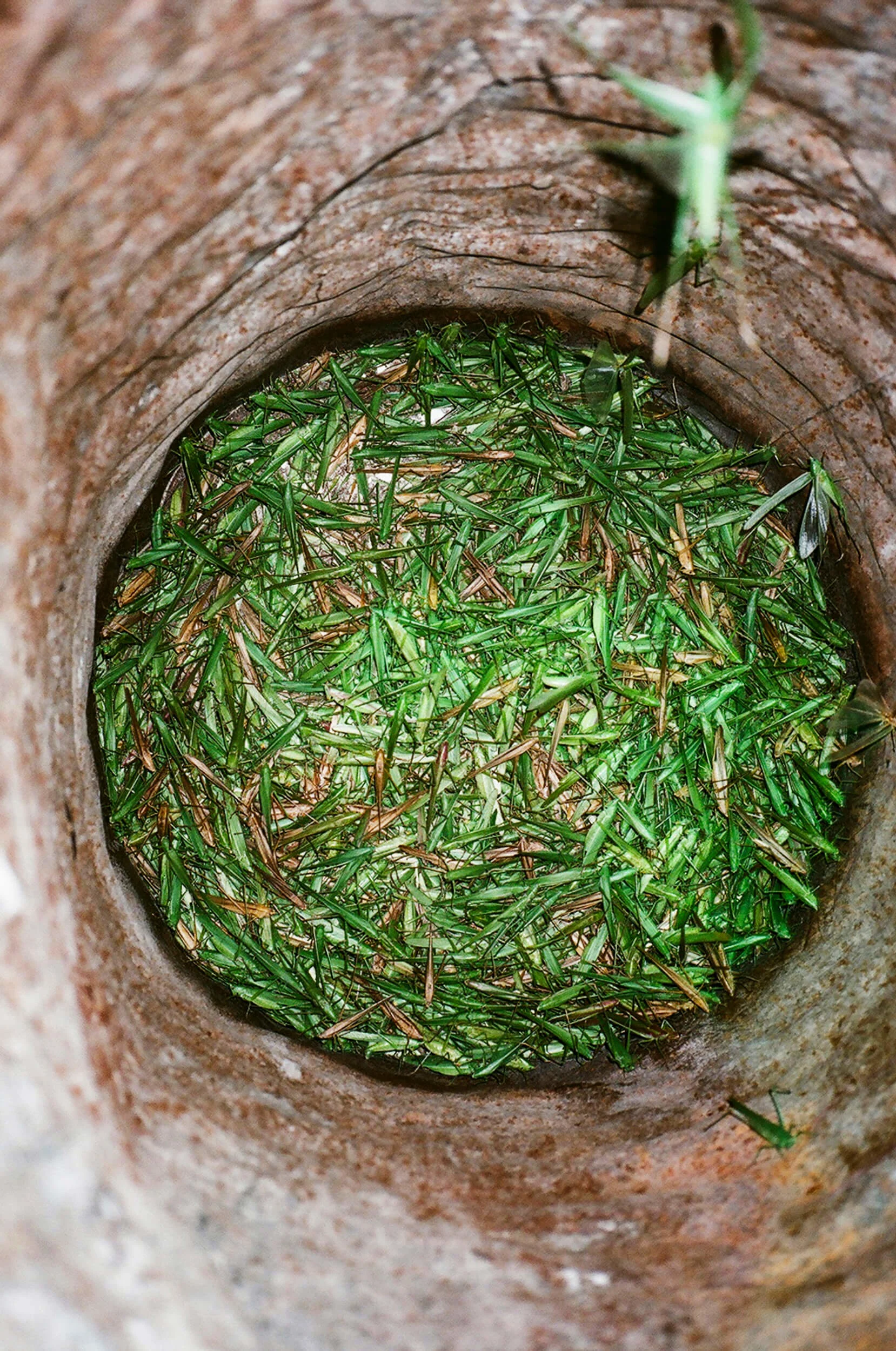
The result of this extended period of work is a body of images that feels unearthly. Michele’s images have a glaucous, night-vision-like hue, plunging the somewhat rare figures of the trappers into an eerie nightscape. “The camera’s sensor reacts to these high-power filaments they use with this green color. With the human eye it appears more white,” he explains when asked about the tone of the images. “This could be considered a technological error, but I kept it. That’s how the RAW files look. I didn’t want to change it.”
Corrugated sheets spotted with insects funnel toward drums, the set-ups looking like strange fairground games, while greenery smolders, creating thick smoke. And, of course, there are the lights: shining through foliage, reminiscent of sci-fi UFO abduction scenes. The images hint at the process of trapping, but also at the mechanisms of the trade: sacks of living crickets, cash exchanges, and the trappers themselves—whether foot soldiers, trap owners or buyers. But the images tell only a part of the story.
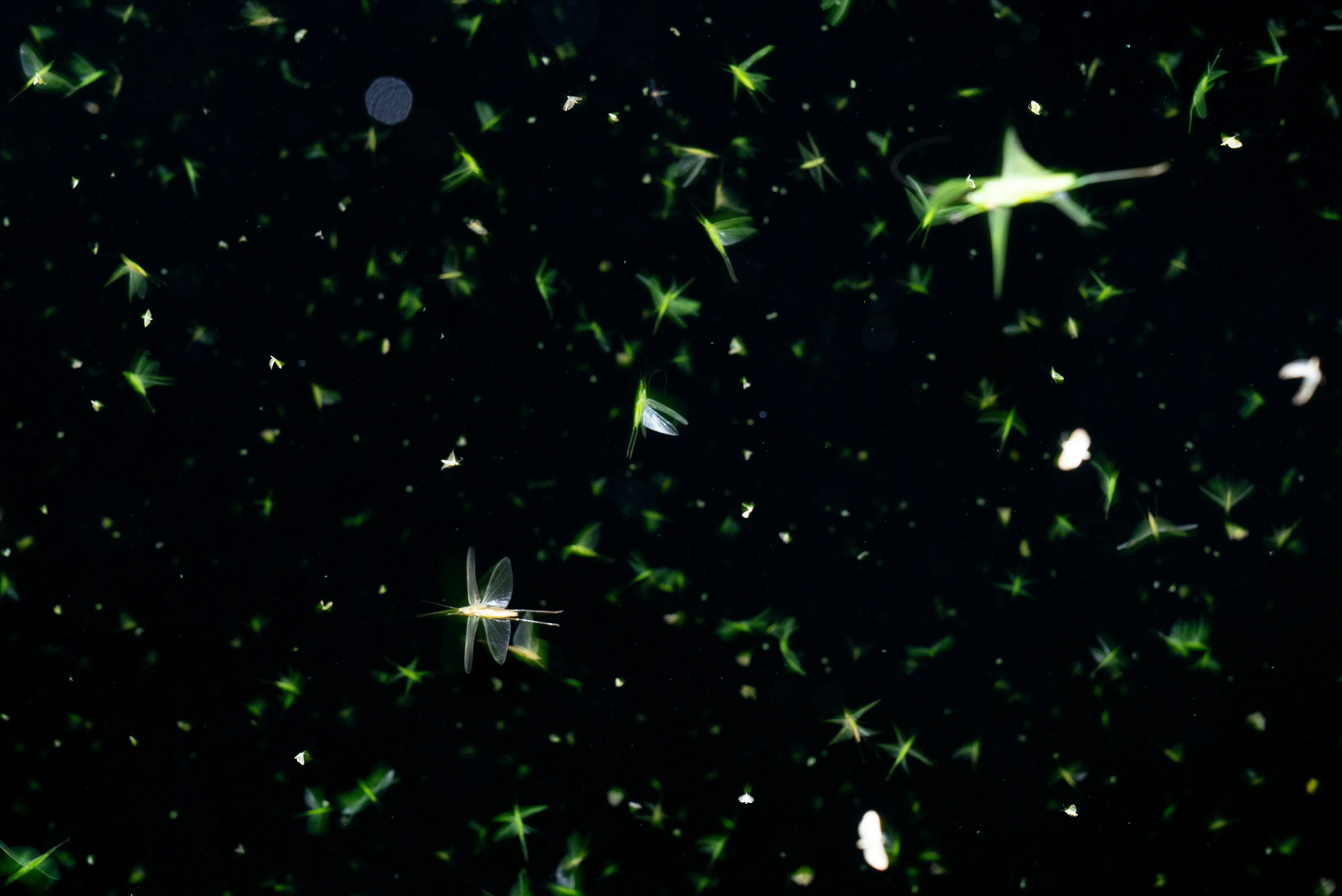
Michele intentionally edited years of work to omit the more explanatory shots (those shown here are not from the book’s final edit). “I tried to edit the book so that images suggested things, or asked questions,” he explains. Some of those questions are answered by the book’s texts, which delve into the complexities of trapping from Ugandan perspectives, something Michele felt was crucial: “For me it was really important to have Ugandan voices telling their stories, perspectives that are different from mine. You don’t want to forget who is actually involved. We have three authors with very different backgrounds. That is what’s going to fill those gaps, explaining things that I don’t think photography is the ideal medium for talking about.”
The texts anchor the photographs, tying Michele’s ethereal observations to lived realities, breaking down the economics of the trapping world as well as the darker sides of the trade: high-stakes financial gambles, danger and criminality. Yet the writings aren’t without their own magic, and are far from turgid ‘explainers’.
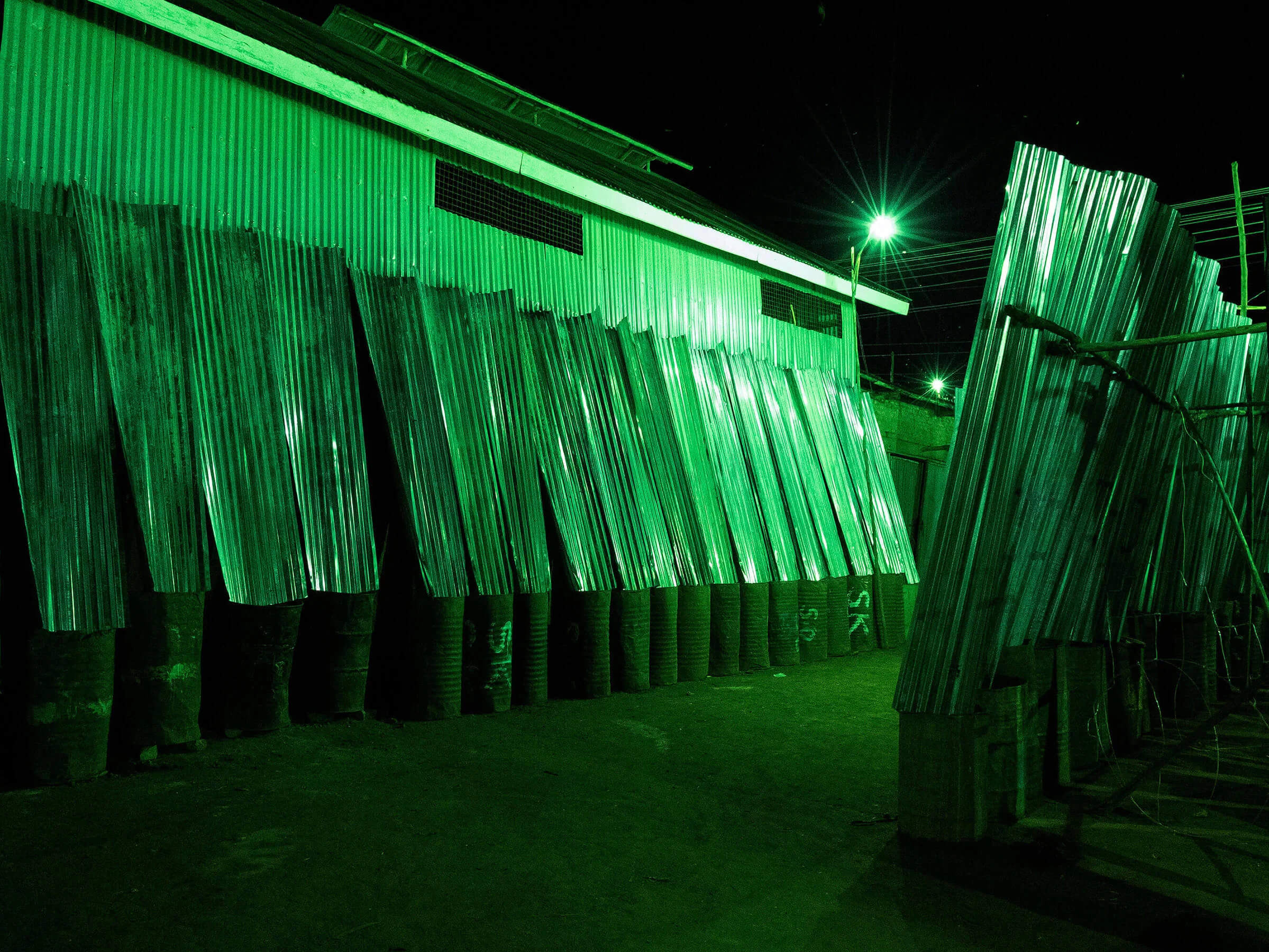
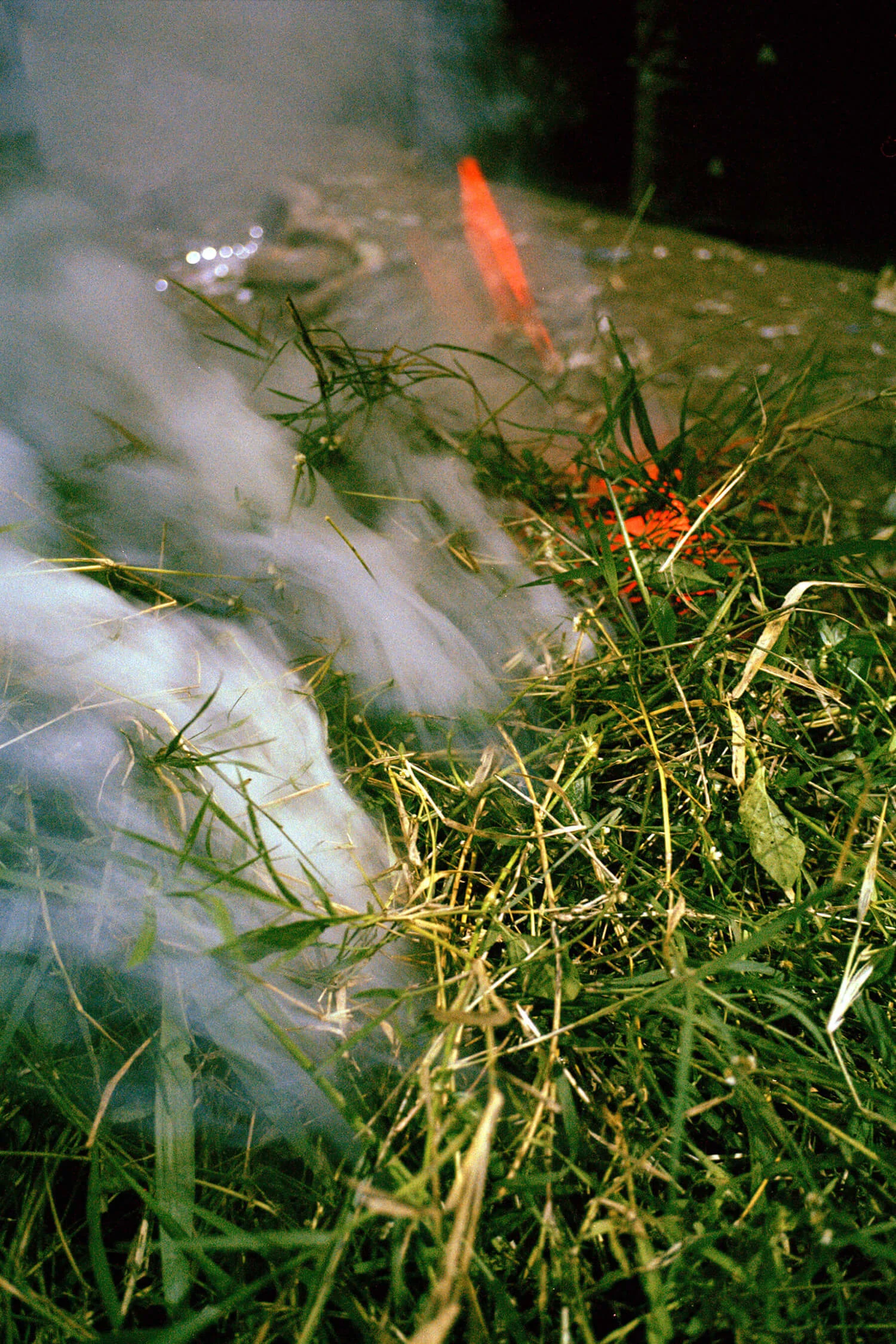

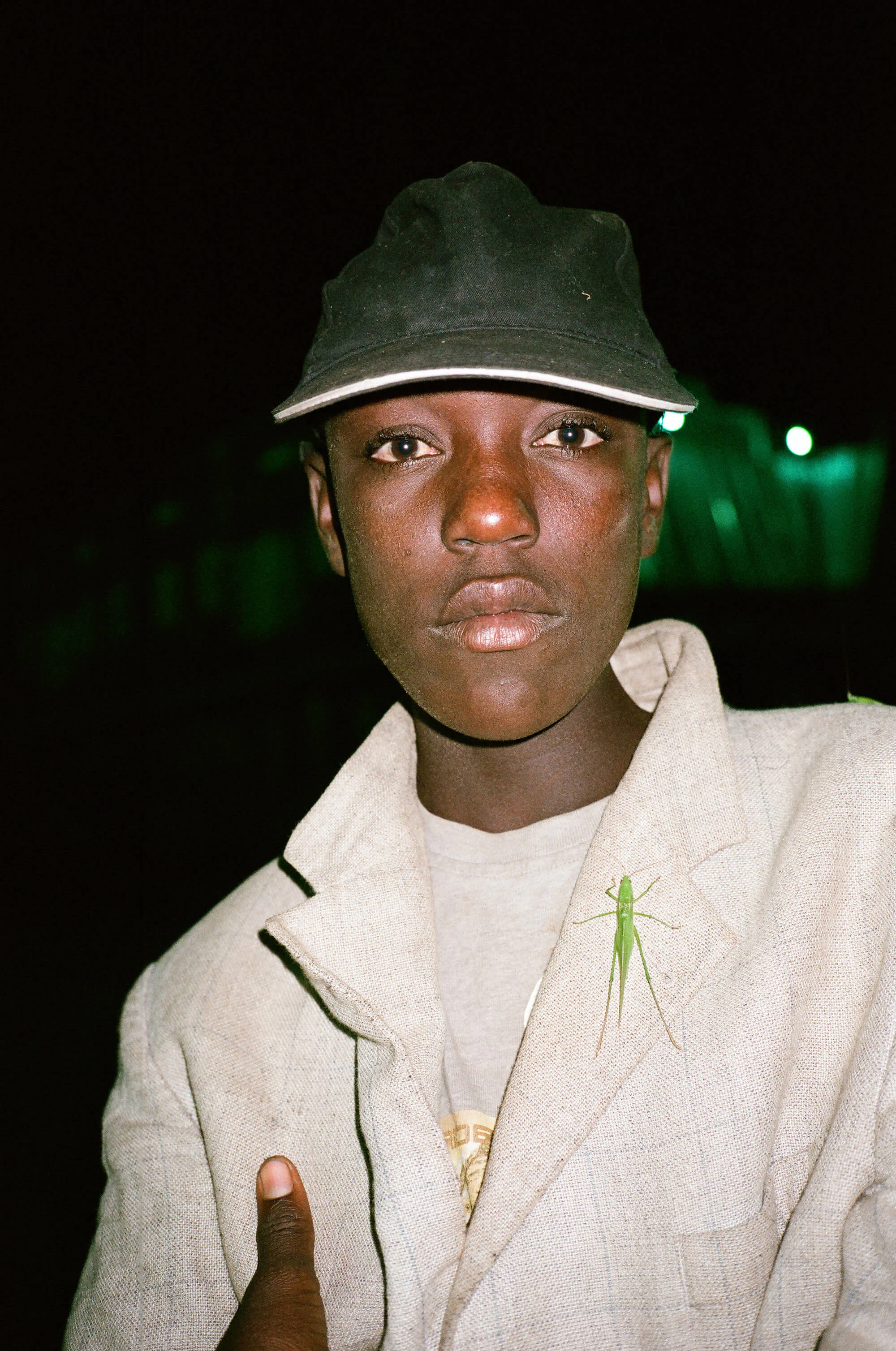
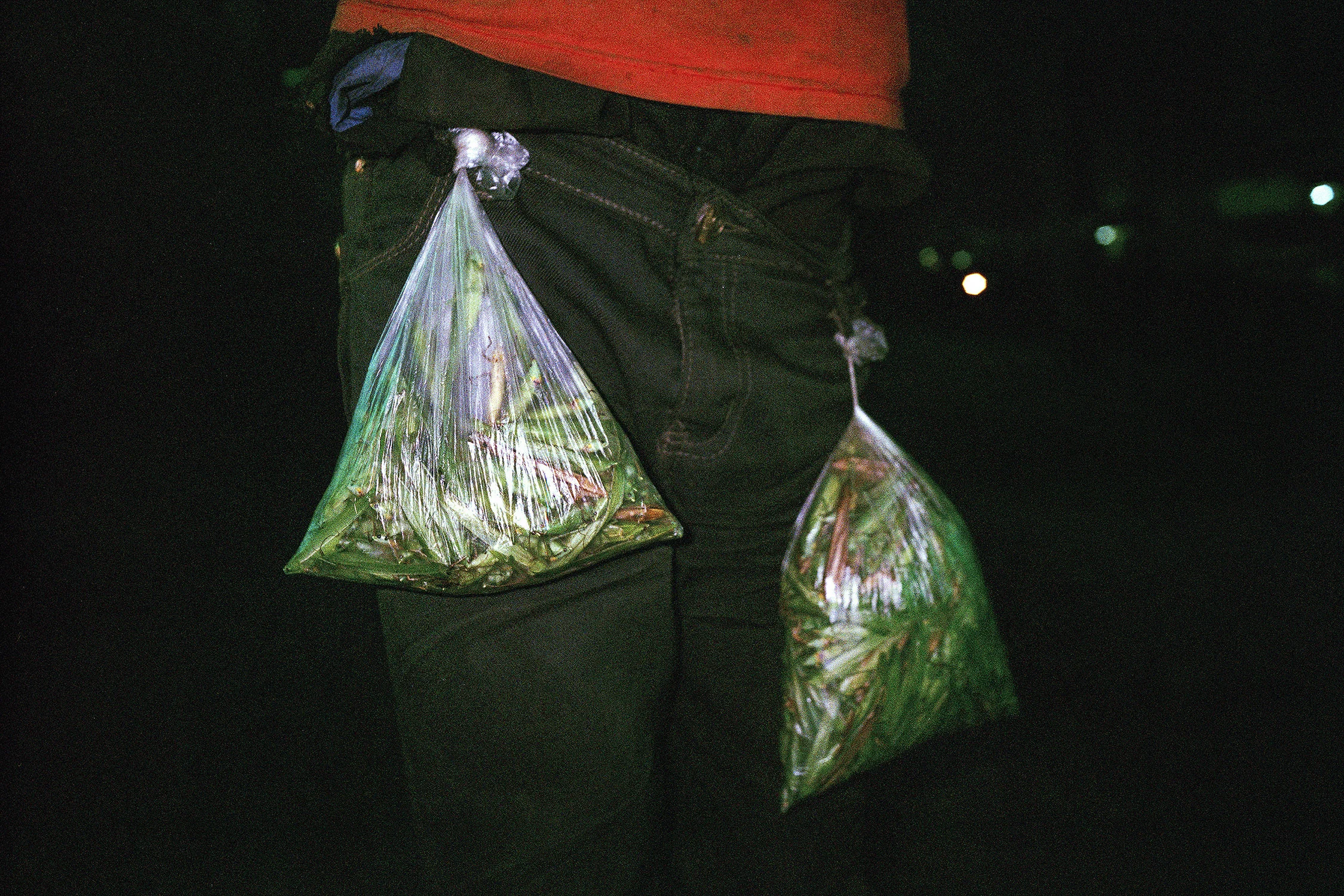
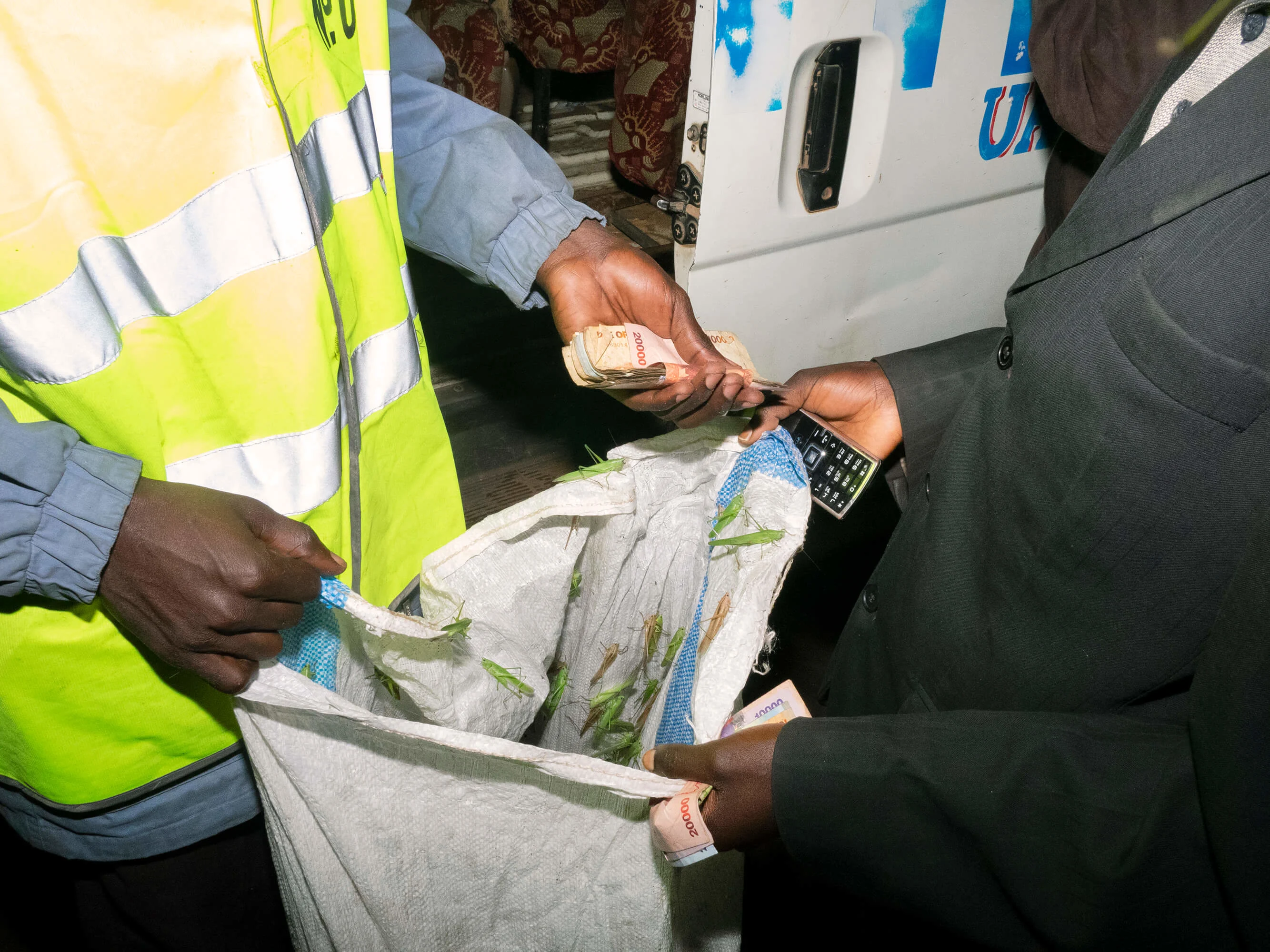
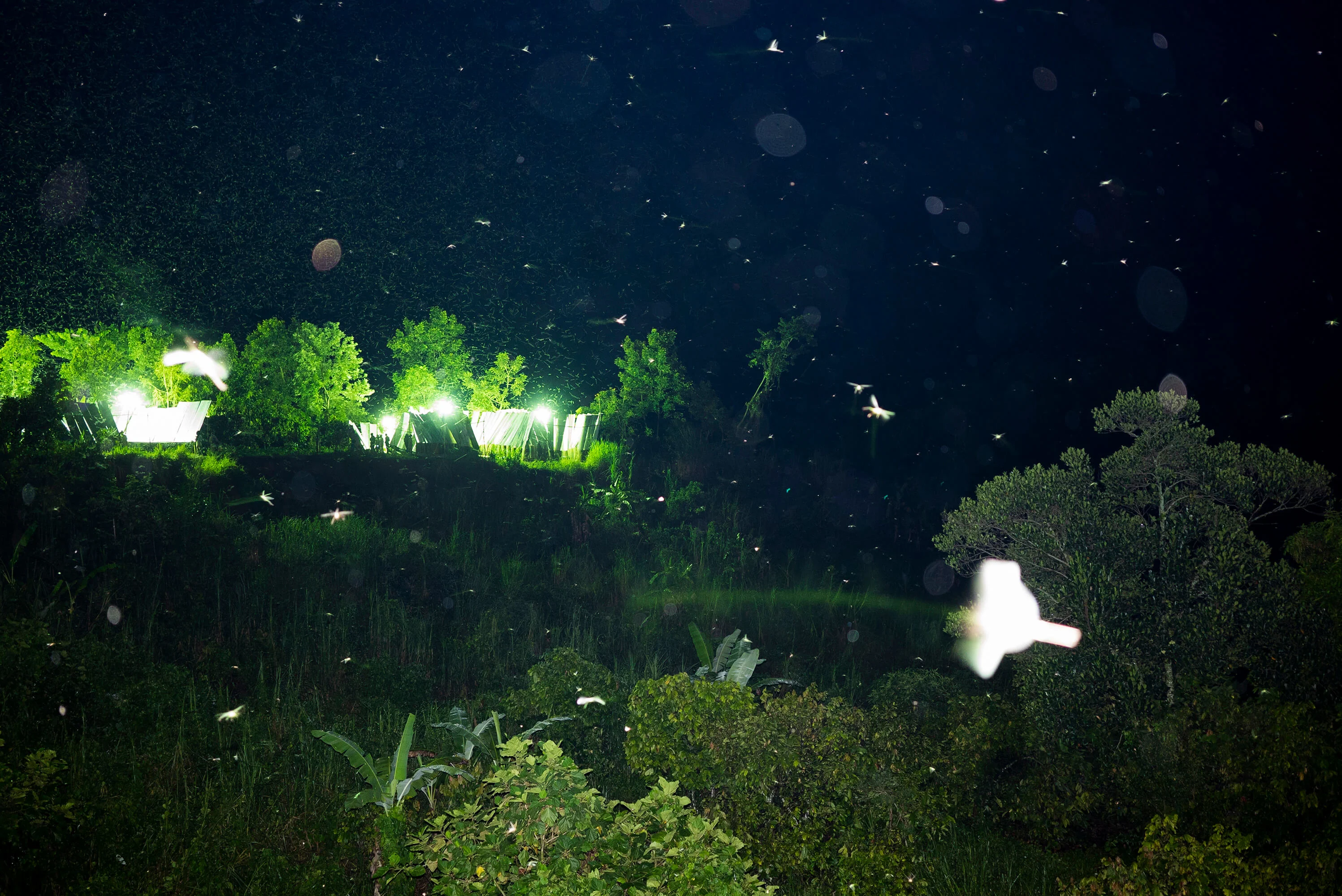


These insects can create access to certain things in life, and there’s something magical about this.
Musician-cum-2021 Ugandan presidential candidate, Robert Kyagulanyi Ssentamu (better known as Bobi Wine) opens his essay with joyous recollections of his childhood experiences of trapping. “It’s like a festival season, a happy, magical time…The darker it got, the brighter the lights shone and the more insects came. Venturing into that uncertain night, we witnessed amazing miracles.”
He goes on to stress the risks involved for those trying to make it big—the investment required and the resultant losses should the swarms fail to arrive where or when they’re expected. He recalls disturbing stories of young girls being raped during those “uncertain nights”, as well as the thefts and beatings commonplace in the ill-regulated and migratory trade in which only a few ever “move up the ranks”.
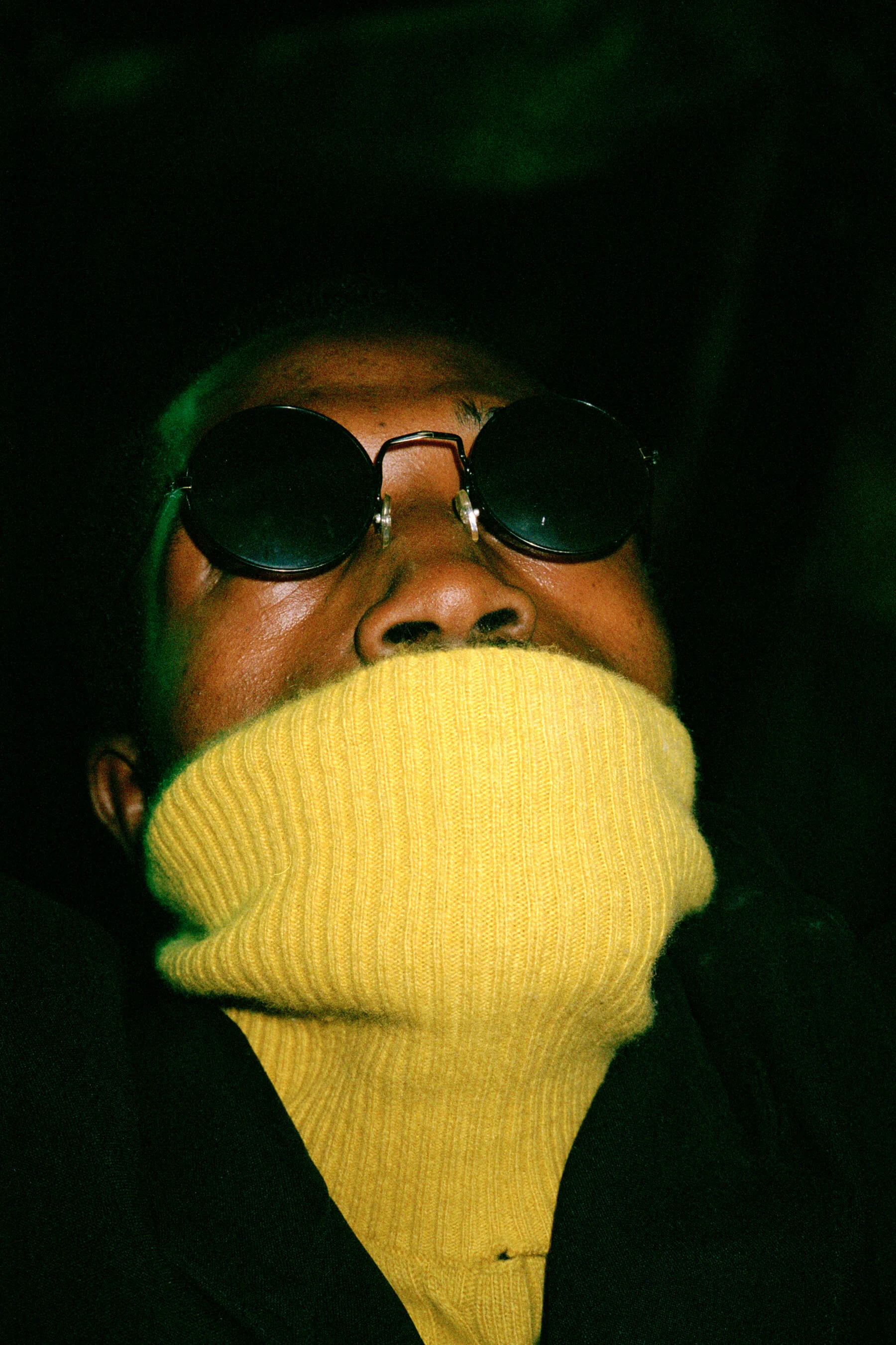

Above all else, however, he stresses the opportunity that the nsenene offer, crediting trapping with paying for his first record. “In my youth, grasshoppers smelled good because it was the smell of success…I revere these insects: grasshoppers have changed my life.” Michele kept this assertion in mind while making the book. “I’m not the right person to establish whether it’s better to [trap] or not to…I really think that these insects can create access to certain things in life. I think there’s something magical about this.”
The “foot soldiers” working the traps are exposed not only to violence and accidents, but also to eye and skin damage from nights spent close to the powerful lamps. These lamps also attract Nairobi flies (actually a type of beetle), which cause chemical burns to the skin. “It’s a tough industry,” Michele reflects. “Young boys set off for the season hoping to make some money…They arrive beautiful, young men, but by the season’s end they leave looking maybe 20 years older…”

In spite of the brutal realities of the trade, the most pervasive sense of threat throughout the work, one that seems to reach its apex in the book’s closing essay by entomologist Francis Sengendo, is that of impending ecological disaster. Habitat loss, climate change, over-trapping—factors global as well as local—all point to a grim conclusion: the nsenene are fewer now than before, less predictable and less accessible. The trappers’ hauls are dwindling.
The thinning swarms are, for Michele, a neat allegory to worldwide issues. His pursuit of the project was driven in part by fear of the nsenene disappearing forever. This is something the photographer saw happen to the nightlife district of Kabalagala, Kampala, the subject of his previous book, Fuck It. “Kabalagala hardly exists anymore,” Michele explains. “It’s there, but it has changed completely. They built big shopping malls and so on. Maybe it will be the same with these grasshoppers. A part of my motivation, something that was always in my mind, was my fear that in two, maybe three years, this will all be gone. [The book] is important as a record.”
You can purchase Michele's book Nsenene via the links below:
- For US residents
- For EU residents

